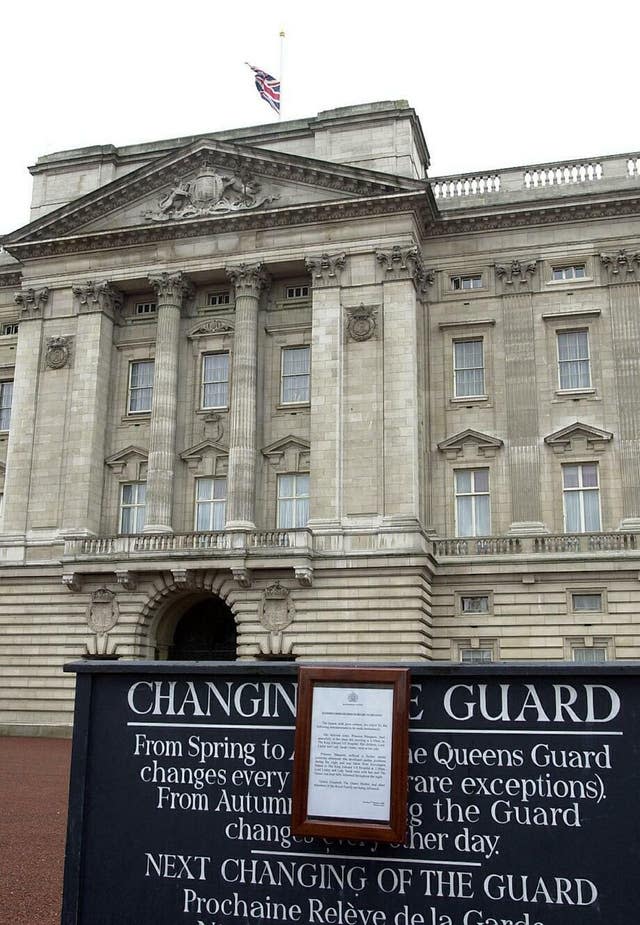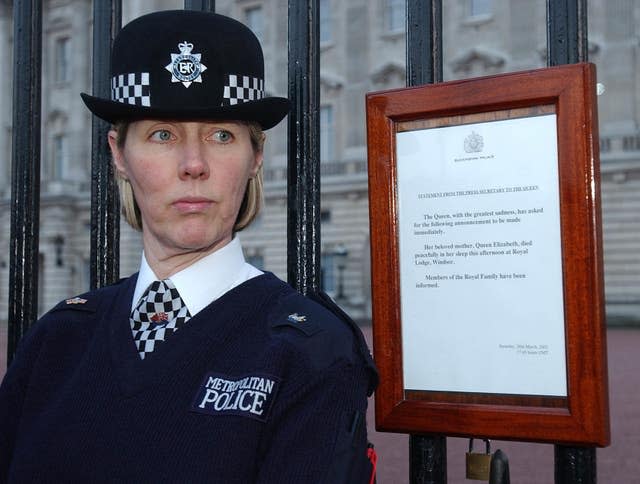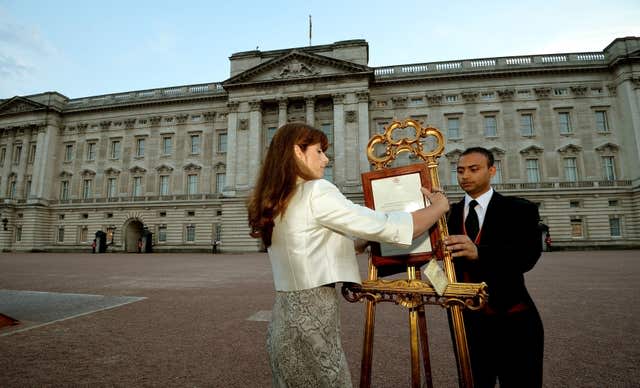Royal births and deaths confirmed traditionally by notices at Buckingham Palace
Royal deaths are usually confirmed with the age-old tradition of placing a notice on show at Buckingham Palace.
A brief bulletin – on paper set in a foolscap imperial-sized dark wooden frame – is used to notify the public of key royal events such as births and deaths.

When the Queen Mother died in 2002, the statement on headed Buckingham Palace notepaper, which features a red royal crest, read: “The Queen, with the greatest sadness, has asked for the following announcement to be made immediately: her beloved mother, Queen Elizabeth, died peacefully in her sleep this afternoon at Royal Lodge, Windsor. Members of the royal family have been informed.”
A police officer stood guard over the glass fronted frame, which is usually fixed to the outside of the iron railings by two small metal chains on the back.
The deaths of George VI and George V were announced this way.

For a sovereign, a notice is also placed on the railings of the house in which they died.
The traditional method of delivering royal news was used for, among other occasions, Prince William’s birth in 1982 and Peter Phillips’s in 1977.
When the Queen gave birth to Prince Andrew in 1960, some 2,000 people crowded around the railings to see the official confirmation.
For each of the births of Prince George, Princess Charlotte and Prince Louis of Cambridge, as well as their cousin Archie Mountbatten-Windsor, the same wooden frame was used to highlight their arrivals.

But on those occasions, the frame was placed on an ornate golden easel on the forecourt of the palace, inside the railings.
Announcements used to be hand-written but now are mostly typed.


